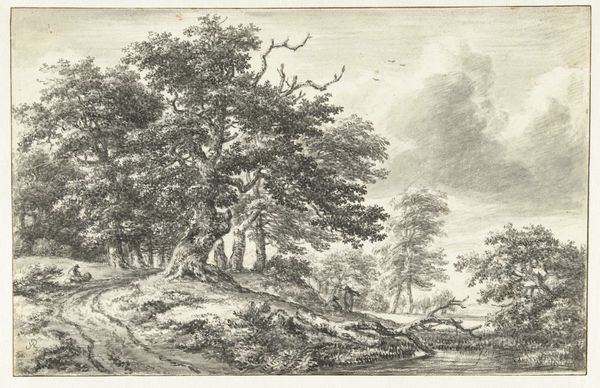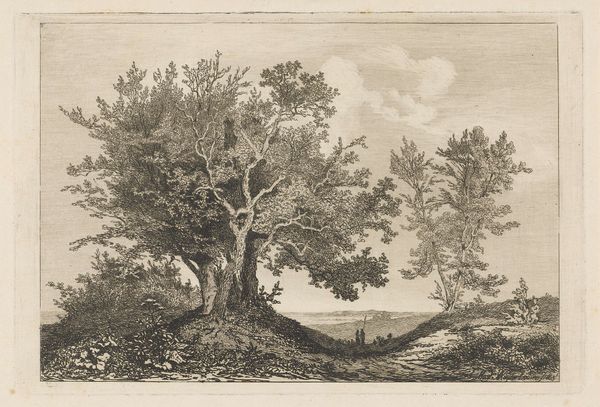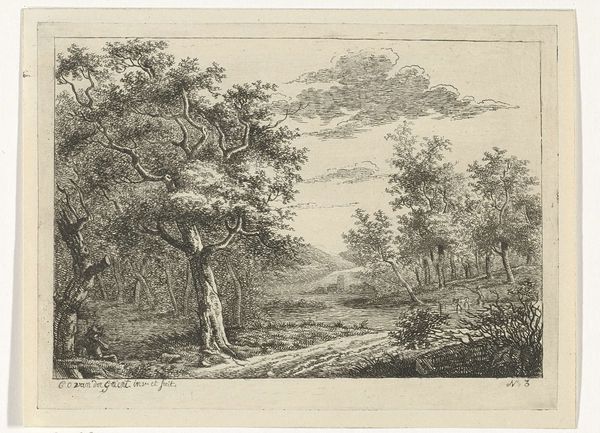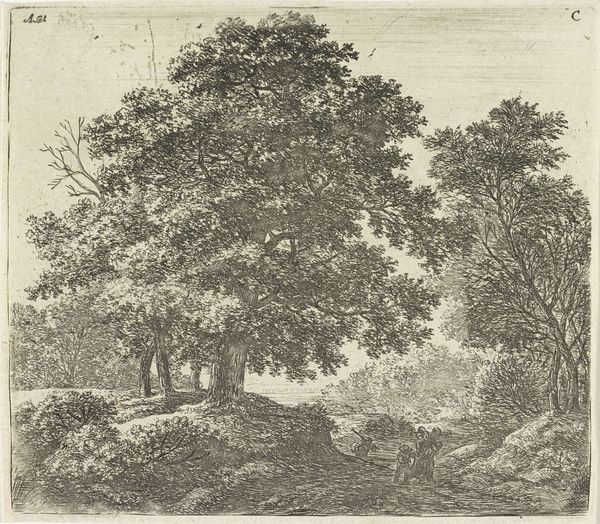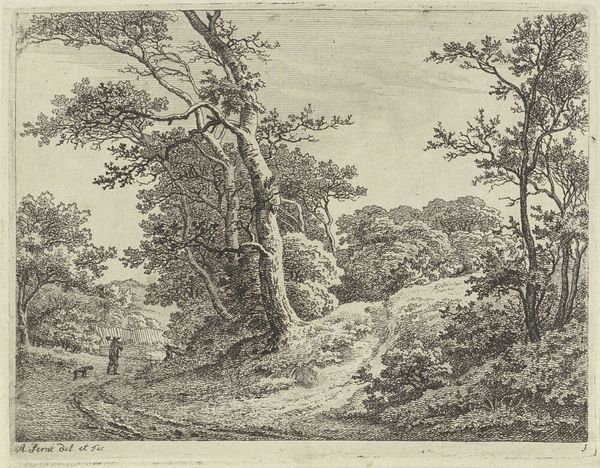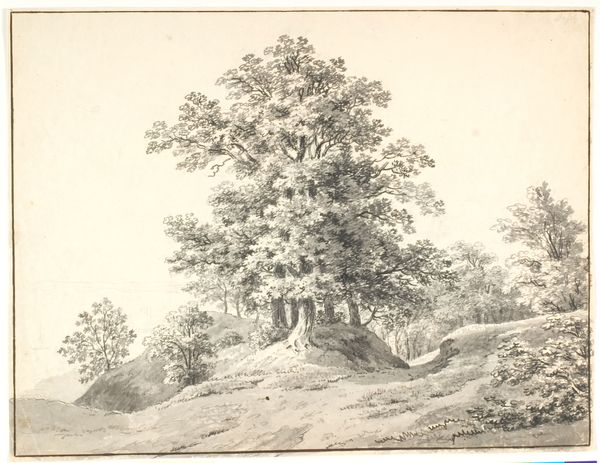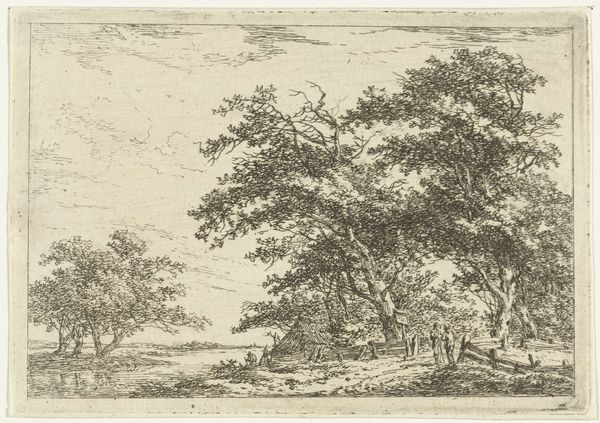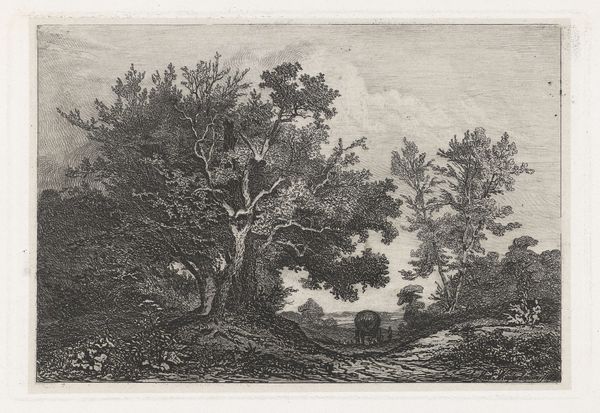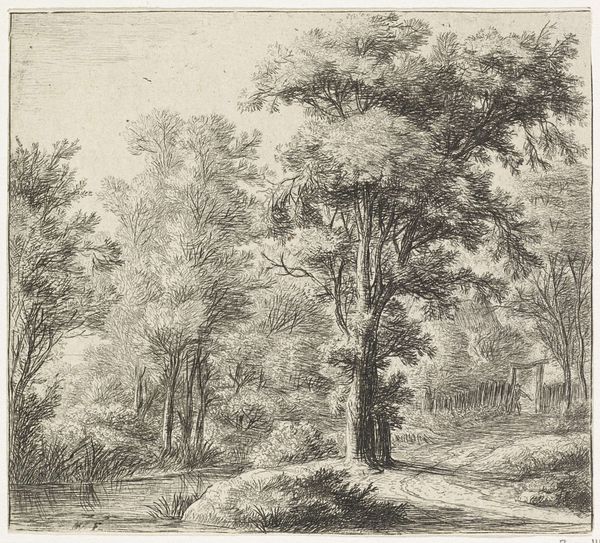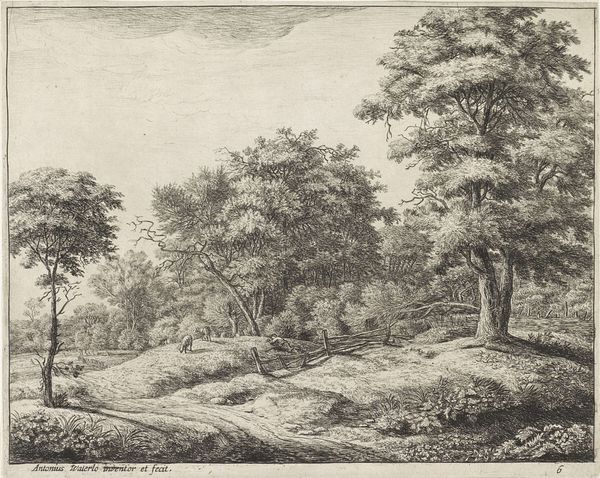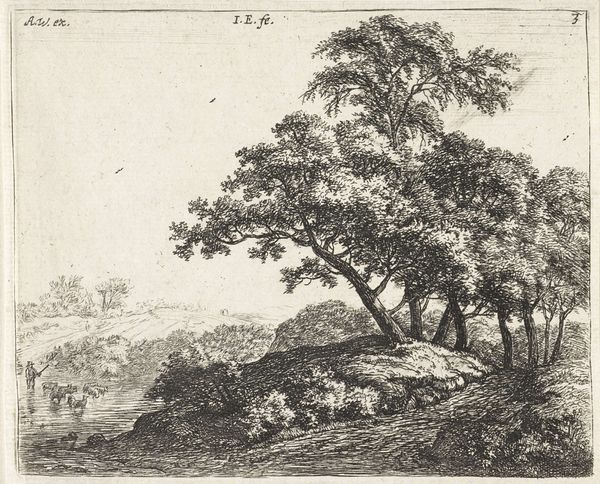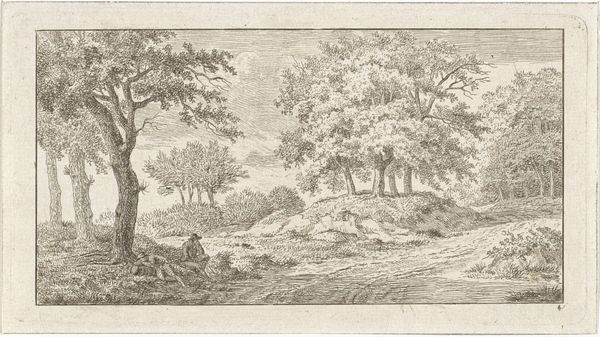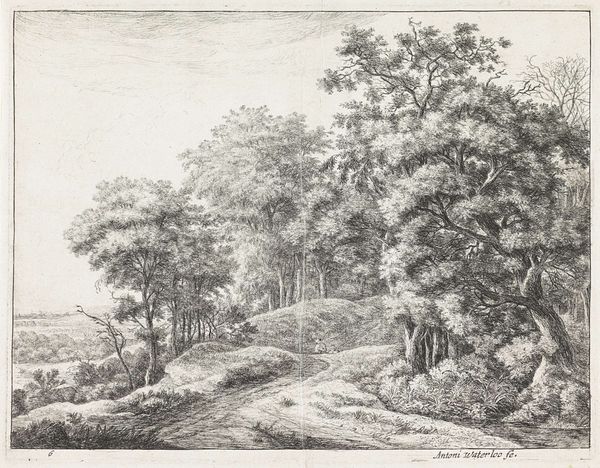
#
landscape illustration sketch
#
light pencil work
#
quirky sketch
#
pen sketch
#
pencil sketch
#
personal sketchbook
#
pen-ink sketch
#
pen work
#
sketchbook drawing
#
sketchbook art
Dimensions: height 173 mm, width 186 mm
Copyright: Rijks Museum: Open Domain
Editor: We're looking at "Landschap met boom" or "Landscape with Tree," a pen and ink drawing from 1844 by Martinus Antonius Kuytenbrouwer jr. The details are incredibly intricate for a relatively small-scale sketch, especially the leaves on the main tree. What stands out to you about the materiality and the making of this work? Curator: What interests me immediately is the accessibility of the medium. Pen and ink, paper—these are readily available materials. This speaks to the democratizing potential of art making itself. Think about the social context. Who had access to what kind of materials in 1844? Was Kuytenbrouwer responding to or rebelling against traditional oil painting and the patronage system it represented with this kind of work? Editor: That's interesting, I hadn’t thought about the socio-economic aspect of art supplies! So, this wasn't necessarily meant for a grand salon, but perhaps something more private or personal? Curator: Precisely! Consider the labor involved. Pen and ink drawings, while potentially quicker than oil paintings, still require a significant time investment. The cross-hatching, the rendering of textures—these were all conscious decisions requiring the artist's meticulous hand. Where might Kuytenbrouwer have learned his technique? Did he have a patron, or was this drawing meant to generate income through printmaking? Editor: So you're saying the artwork's value lies not only in its aesthetic quality but also in the context of its production and how accessible it was for both the artist to create and for the public to appreciate? Curator: Absolutely. We see art not as a mystical creation divorced from reality, but as a product of its material conditions and the social relations surrounding its creation and consumption. Think of the paper: its production, its trade. Everything from the ink to the subject reveals details about society at that time. Editor: I see what you mean! Looking at it from a purely materialistic perspective reveals so many new layers of meaning that I would have completely missed otherwise. Curator: Indeed. And understanding the means of production gives us a better understanding of art’s true value, beyond just the aesthetic.
Comments
No comments
Be the first to comment and join the conversation on the ultimate creative platform.
